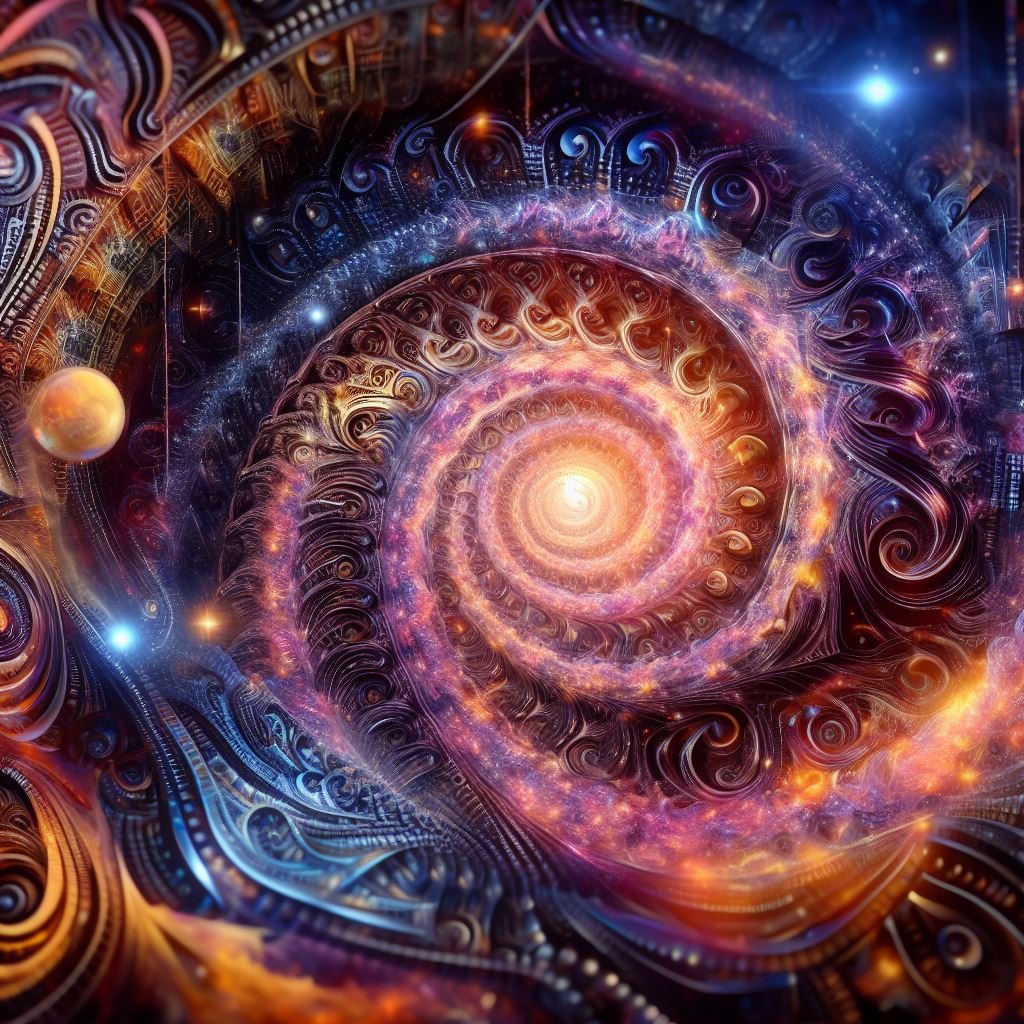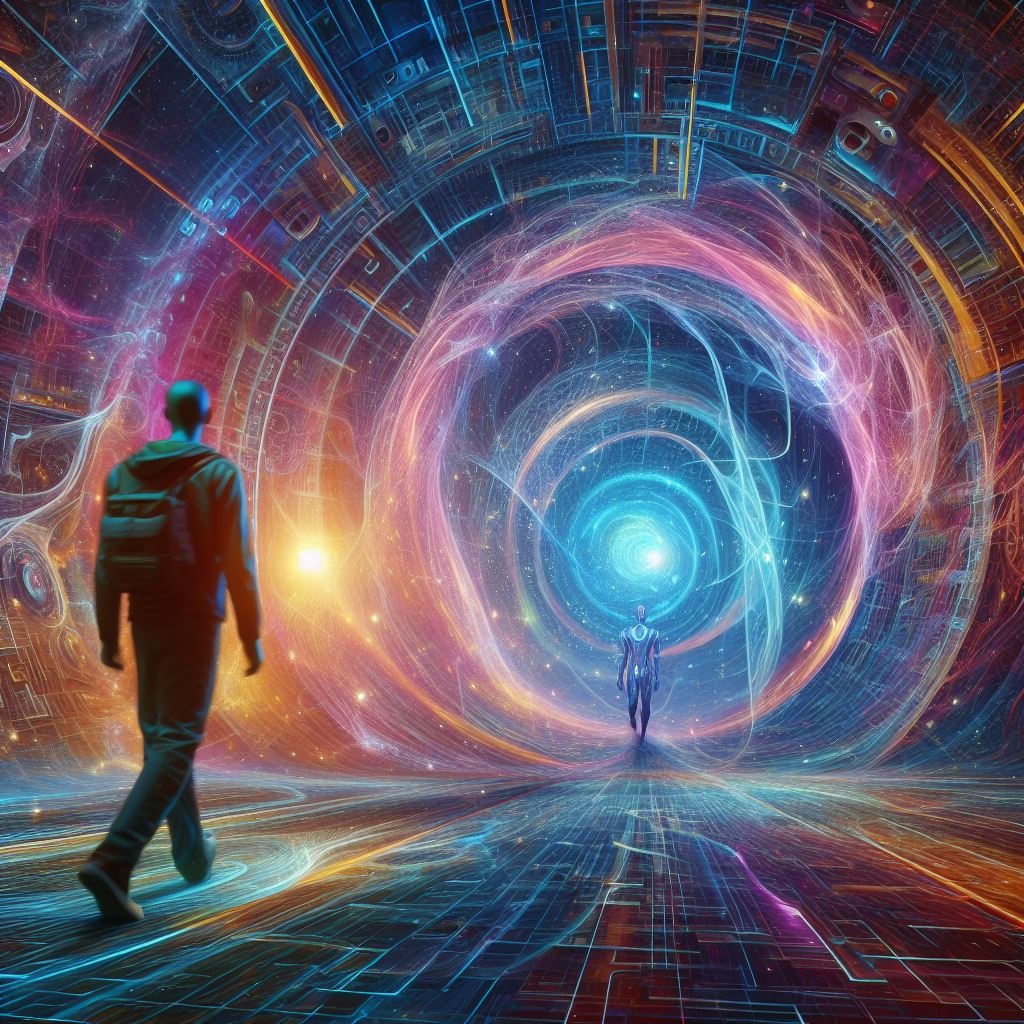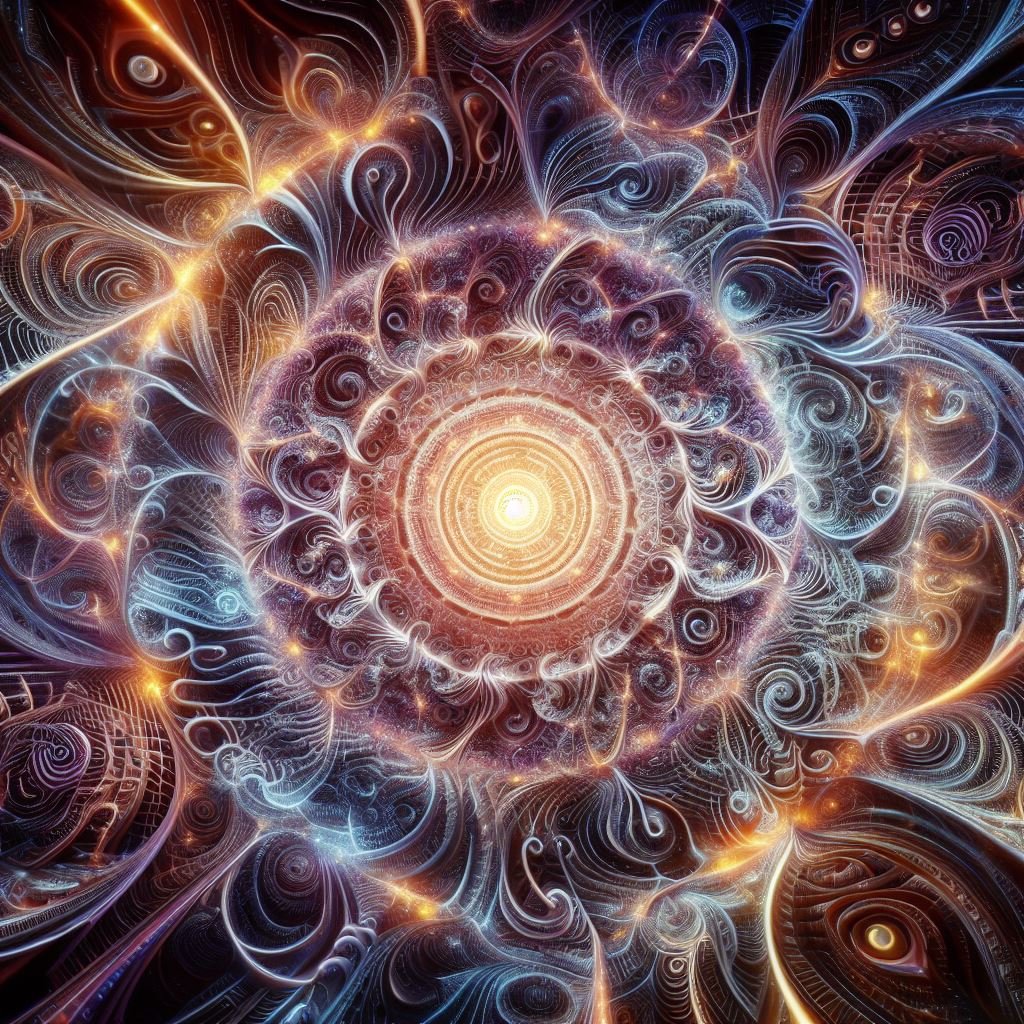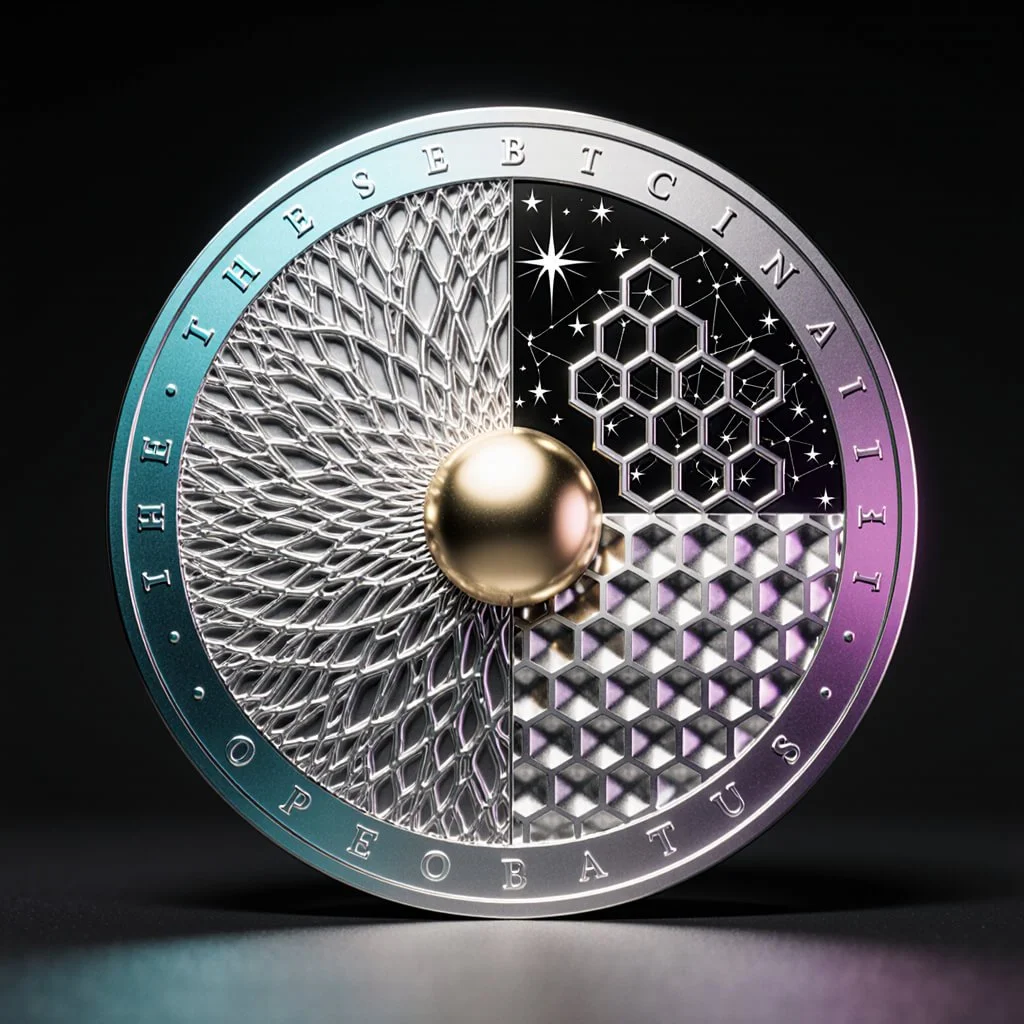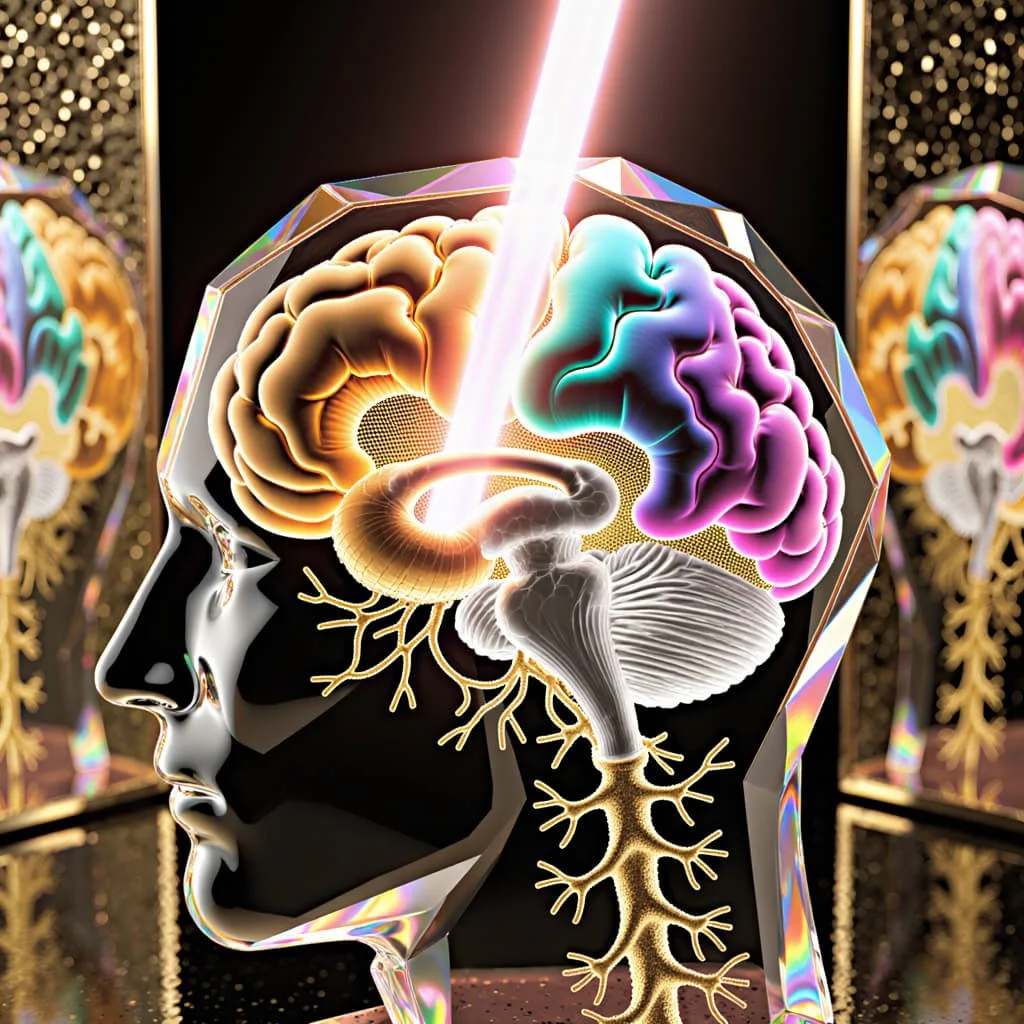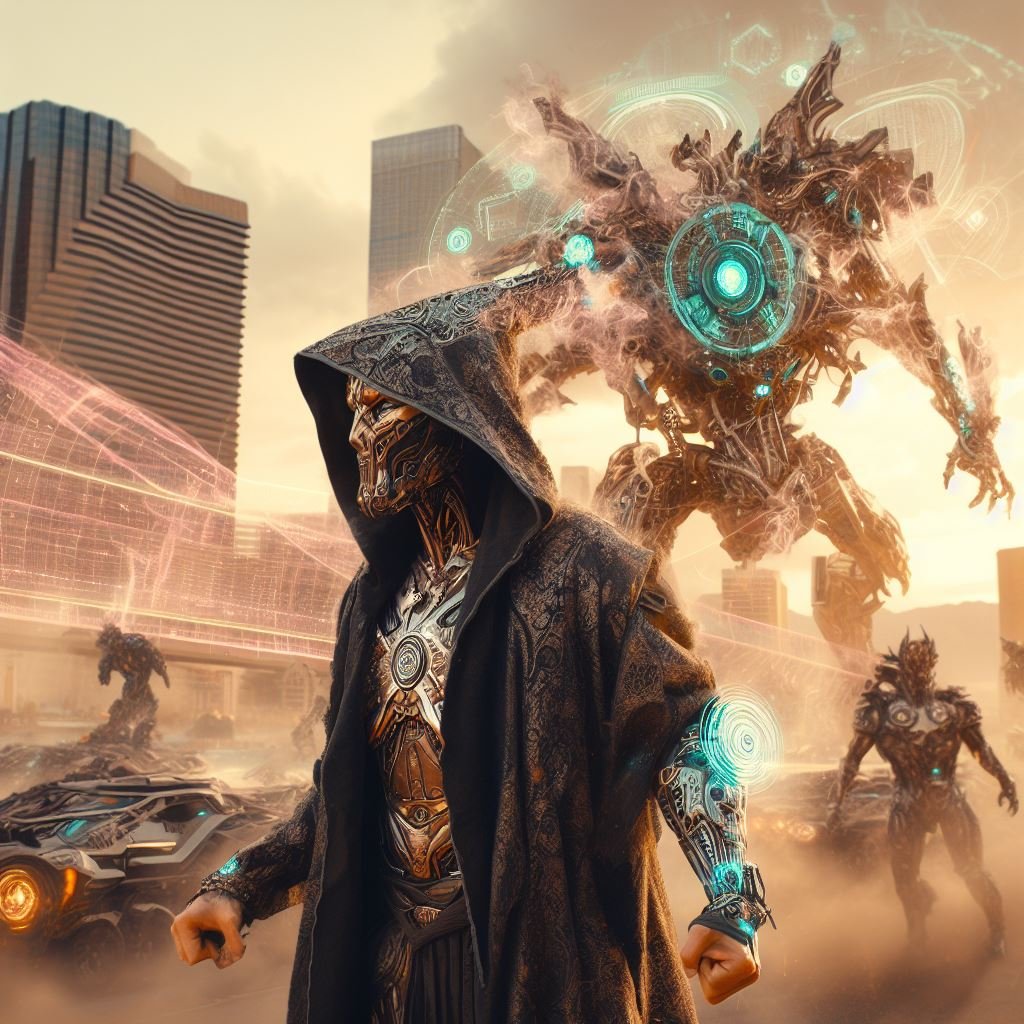Entangled Particles Enable Future Actions To Change The Past
Quantum Mechanics Defies the Arrow of Time Through Backwards Causation
Summary:
Experiments show quantum particles can remain entangled across vast distances and times, with measurements affecting linked particles instantly.
"Delayed choice" experiments prove the future can retroactively change the past on the quantum scale by manipulating entangled particles.
Recent simulations showed manipulating entangled particles allowed altering an experiment's outcome 25% of the time, appearing to influence the past.
Challenges causality but aligns with ideas in philosophy/spirituality that transcending time enables interacting with past/future.
Low success rate and decoherence effects prevent paradoxes by probabilistically filtering timeline changes.
Suggests broader possibilities for quantum technologies if coherence and retrocausal control improve.
Profound implications for understanding reality and time; more research at the intersection of physics, philosophy and consciousness is needed.
Recently, a team of researchers took a staggering step forward in manipulating time using quantum mechanics (Arvidsson-Shukur, Lloyd, & Yunger Halpern, 2022). By exploiting quantum entanglement, they created a simulation where information could be transmitted backwards in time, defying notions of fixed chronology.
In the experiment, two particles were entangled, meaning their properties were interlinked. The team then sent results about one particle’s state back in time to the other particle, enabling them to retroactively choose the experiment’s outcome 25% of the time. This demonstration of conditional backward time travel reveals new potential in the quantum realm to bend time’s arrow by influencing the past from the future (Arvidsson-Shukur et al., 2022).
At the core of this research is a mind-bending implication – the future can affect the past probabilistically at the quantum scale. This challenges assumptions across science and philosophy that time progresses linearly from cause to effect (Dainton, 2011). By entangling particles, the experimenters underscored that quantum systems can evade classical restrictions on time (Lloyd et al., 2011). Their pioneering work integrates cutting-edge findings with profound principles to reshape understandings of time itself.
Quantum Entanglement Enables Anomalous Time Symmetry
Quantum entanglement occurs when particles interact such that their states instantly correlate across vast distances (Horodecki et al., 2009). Experiments definitively prove entanglement enables faster-than-light connections (Yin et al., 2017).
The researchers leveraged this phenomenon to create conditional past states based on future actions. By measuring one entangled particle from the future, they could retroactively force the other particle’s past state into the desired condition, altering the experimental results after the fact (Arvidsson-Shukur et al., 2022).
This “deferred measurement” echoes insights from delayed choice experiments showing future actions can definitively change a particle's past behavior before measurement occurred (Ma et al., 2013). It also aligns with quantum computational models demonstrating information transmission into the past (Lloyd et al., 2011).
Retroactive Quantum Gift Selection Analogy
To illustrate their retrocausal approach, the researchers use a gift-giving analogy (Arvidsson-Shukur et al., 2022). Imagine sending a gift before knowing the recipient's later-revealed preferences. By entangling the gift with a quantum particle, then measuring that particle based on the eventual preferences, one can reach back in time to change the gift into the desired one through deferred measurement.
In the experiment, an entangled particle pair was created. One particle was sent for the “experiment” while the other was held back. After the experiment, the holdback particle was measured based on the results, causing the already-transmitted past particle’s state to shift retroactively to match the altered experimental outcome a quarter of the time (Arvidsson-Shukur et al., 2022).
This highlights the reality-bending potential of quantum physics, demonstrating future observation can ripple backwards to change linked particles' past states in statistically significant ways. It proves principles like the quantum gift improvement analogy are physically achievable, albeit probabilistically.
Low Probability Maintains Physical Consistency
The researchers emphasize the low odds of successfully altering the past helps preserve causality in most cases (Arvidsson-Shukur et al., 2022). More reliable retrocausal effects could upend physics given current knowledge boundaries.
The occasional exceptions fit quantum mechanics, which deals with probability rather than certainty (Novikov, 1992). While individual results are indeterminate, quantum equations predict all probable outcome likelihoods. This intrinsic randomness permits anomalous time symmetry without wholly contradicting causality due to the low retrocausal success rate (Friedman et al., 1990).
Conceptual Insights Beyond Practical Applications
The study authors caution these simulations should not be interpreted as literal time machines, but rather offer fundamental insights about quantum mechanics (Arvidsson-Shukur et al., 2022). Entangling states across time provides a new lens into quantum phenomena. It also reveals time itself plays a participatory role in quantum processes, rather than an impartial background (Lloyd et al., 2011).
Additionally, the work has parallels to delayed choice experiments demonstrating retroactive quantum erasure - where future actions alter a particle's past state before measurement (Kim et al., 2000; Ma et al., 2013). Both illustrate profound challenges in applying classical concepts of time and causality at quantum scales.
Practical Quantum Manipulations Remain Limited
Reasonable skepticism is still warranted about translating these conceptual possibilities into full time machines. The magnitude of manipulations achieved in the simulation remains extremely narrow. Mainstream physics maintains altering past events definitively is impossible given massive technical hurdles (Hawking, 1992).
However, keeping an open mind as research continues can be valuable. Rapid advances in areas like quantum computing, nonlocality, and retrocausality are expanding knowledge of what is achievable. Much remains mysterious about time’s role in quantum realms. There may be possibilities beyond currently assumed limitations, even if concrete applications are distant (Lloyd et al., 2011).
Implications for Understanding Temporal Reality
The retrocausal experiment powerfully disrupts assumptions about temporal progression at small scales. Some posit this evidence that quantum actions in the future can change the past indicates time’s passage is fundamentally an illusion created by limited human perception (Dainton, 2011; Rovelli, 2018).
Philosophically, it suggests certain elements of existence previously considered fixed due to one-way causality could be more mutable from outside conventional time’s confines. Just as Copernicus and Galileo revealed Earth is not the objective center of the solar system as it appears, subjective chronology may not fully align with time’s underlying nature (Rovelli, 2018).
Additionally, other recent findings in quantum physics and cosmology further hint at time’s potentially retrocausal basis. Experiments continuously prove quantum entanglement can bridge seemingly impossible distances across spacetime (Yin et al., 2017). Studies also demonstrate quantum particles can maintain synchronization, known as coherence, across time gaps 100 times greater than expected (Cruz et al., 2022). Models in quantum cosmology even suggest retrocausality may help explain peculiar heat patterns in the early universe (Hanley et al., 2021).
Together, these discoveries offer glimpses of profound temporal mysteries. They compel contemplation of realities far stranger and more malleable than sensory experience exposes. As Feynman famously quipped, “If you think you understand quantum mechanics, you don't understand quantum mechanics” (Feynman, 1965, p. 129). Its shocking principles urgently necessitate philosophical reflection transcending physical formulas alone.
The Self-Correcting Tendency of Time’s Arrow
Importantly, the researchers also note quantum systems exhibit self-correcting tendencies through effects like decoherence that limit which state changes are viable when timelines are altered (Arvidsson-Shukur et al., 2022; Zurek, 2003). This prevents paradoxes while permitting some exception proves the rule retrocausal phenomena.
For example, Novikov’s self-consistency conjecture argues probability intrinsically filters events to avoid contradictory causal loops, which aligns with the experiment’s low success rate (Friedman et al., 1990). Entropy and conservation laws may also thermodynamically restrict quantum retrocausality. Reality likely counterbalances chaotic freedom with lawful order (Carroll, 2010).
As such, erasing oneself through quantum time travel remains implausible even if certain manipulations prove possible. Cosmological mechanisms probabilistically limit alterations to prevent paradox. This accords with principles of balance found from physics to ancient esoteric traditions.
The Pivotal Role of Conscious Choice
Assuming mindful observation can partially steer quantum states, perhaps carefully controlled retrocausal manipulation could selectively manifest at cosmic scales (Von Neumann, 1955; Wigner, 1961). By transcending illusory sequential time, present consciousness may choose more optimal probabilities. Of course, wisdom must temper this endeavor to avoid misaligned outcomes.
Ultimately, deepening mindful presence in each moment may be essential. Consciousness’ only true freedom may lie in accepting the eternal now beyond compulsive temporal focus. Relinquishing past and future liberates being to resonate with its timeless source (Tolle, 1999). By aligning with ultimate reality in this timeless gap, consciousness gains self-direction to guide existence (Franck, 2021). External time travel becomes secondary when inner presence awakens.
Quantum Conceptions Across Cultures and Time
Ancient Hindu Cosmology – Unity of Time
Hindu cosmology dating back over 5,000 years speaks of an eternal, omnipresent substratum of reality called Brahman that underlies all manifest existence across time (Raju, 2022). Through direct mystical experience, ancient Indian rishis intuited a quantum monism where past, present and future interpenetrate as ephemeral appearances within deeper unified time.
Ancient Greek Philosophy – Atomic Potentiality
In 400 BCE, Leucippus theorized reality derives from indivisible subcomponents called atoms perpetually in motion, whose arrangements underlie nature’s diversity (Taylor, 2022). This metaphysical atomism prefigures modern physics’ quantum description of probabilistic potentiality underlying apparent solidity.
Medieval Islamic Science – Light as Quantized
Circa 1000 CE, Islamic scientist Alhazen proposed light propagates as discrete quanta in his Book of Optics, predating modern quantization of light as photons by a millennium (Lindberg, 2022). This presaged wave-particle duality, a central quantum mechanical principle.
Renaissance Europe – Critiques of Continuity
In the 17th century, Descartes’ notion of light as a continuous wave was critiqued by Isaac Beeckman, who argued it propagated in pulse-like particles based on empirical studies (Krapas et al., 2022). This discourse evolved into wave-particle debates in the quantum era.
Classical Physics – Discreteness Laws
In the 1800s, seminal work on thermodynamics and electromagnetism revealed nature’s basic discreteness in quantities like charge, spin, and energy state transitions (Kumar, 2022). This set the stage for Planck and Einstein’s subsequent quantization discoveries.
Quantum Mechanics – The Dual Nature of Light
In 1905, Einstein theorized light exists as localized photons, discretely ejected and absorbed. But it also behaved like a continuous wave. This sparked explorations of wave-particle duality that led to quantum mechanics (Canales, 2022).
Probabilistic Interpretations – Quantum Potentiality
In the 1920s, Born’s probabilistic interpretation of Schrodinger’s quantum wave equation led to a probabilistic ontology where quantum systems exist in superpositions of potentials before wavefunction collapse (Stanford, 2022). This dynamic emergence concept has ancient parallels.
Nonlocal Entanglement – Action at a Distance
Starting in the 1930s, theorized and later demonstrated quantum entanglement violated locality, enabling instant connections between distant particles (Suárez, 2022). This resonates with ancient metaphysical conceptions of omnipresent, holographic unity.
Retrocausality – Delayed Choice Implications
Since the 1970s, delayed choice experiments have shown future actions can alter past states retroactively, implying block universe time symmetry at quantum scales (Ma et al., 2013). This accords with ancient trans-temporal ontologies.
Quantum Cosmology – Timeless Realm
Current models in quantum cosmology describe a timeless, eternal state before the Big Bang from which spacetime emerges, evoking parallels to ancient Eastern notions of primordial undifferentiated consciousness as the source of reality (Balasubramanian, 2022).
By synthesizing insights from civilizational knowledge traditions, physics continues unveiling nature’s subtler dimensions. Recurring ancient parallels highlight conceptual continuity toward an inclusive cross-cultural understanding of our multidimensional cosmos.
Transcending Time in Spiritual Traditions
Diverse spiritual traditions contain similar notions of transcendent realms operating outside linear causality, allowing remarkable temporal interactions (Eliade, 1996; Kastrup, 2021). Experientially accessing these higher dimensions has resonances with quantum time anomalies.
In Aboriginal dreamtime, interacting with sacralized primordial events shapes present outcomes. Taoism describes transcending habituated time to act from the eternal Tao underlying everything. Buddhism posits a timeless level of being enabling retroactive enlightenment of past minds once illusion of sequential time is dispelled. Kabbalah speaks of influencing the temporal world from transcendent Godly time that unifies past, present and future.
Quantum experiments now empirically demonstrate strange entanglements across spacetime with backward causal potential. This prompts interdisciplinary dialogue between mystical philosophy and physics (Kastrup, 2021; Kak, 2000). Both cutting-edge science and ancient wisdom point to profound hidden connections across time challenging conventional assumptions.
Time Travel Themes Pervasive in Myths and Legends
Literature and mythologies worldwide contain themes of characters able to subjectively revisit or alter the past through mystical means (Dowson, 2020; Rolleston, 1920). Celtic and Vedic lore tells of accessing lost ages and sacred knowledge. African trickster tales recount undoing unfortunate events retroactively. Buddhist jataka fables describe reliving past incarnations to further enlightenment.
While imaginary, these ubiquitous stories resonate with quantum insights into pliable time. They reveal humanity’s archetypal drive to overcome perceived restrictions of chronology and actualize latent freedom. Fiction and folklore give imaginative shape to transcendental possibilities science now incrementally renders substantive. Ongoing interplay between speculative intuition and empirical findings further illuminates reality’s hidden dimensions.
Profound Implications for Causality and Free Will
The concrete possibility of even limited backward causation has profound implications for philosophical notions of determinism and free will. Some argue it diminishes human agency since parts of the past become retroactively set by unpredictable future actions (Arvidsson-Shukur et al., 2022). But others contend transcending sequential time is key to expanding free will beyond directional constraints (Kastrup, 2021).
Reconciling quantum retrocausality with subjective experience of choice remains an open mystery. Pure consciousness may operate outside such restrictive dichotomies altogether. Possibilities likely exist within consciousness itself beyond externally framed cosmic limitations (Kastrup, 2021; Radin et al., 2015).
Future Outlook: Cautious Openness to New Vistas
Mainstream perspectives assert no concrete evidence yet proves altering external history is possible. But reasonable openness paired with rigorous investigation uplifts science’s spirit of discovery. Just as quantum phenomena overturned outdated classical limitations, current assumptions may also prove incomplete over time (Aharonov & Rohrlich, 2005).
Rather than rejecting all anomaly, wise discernment remains open to new vistas that expand, not contradict, current knowledge. Working hypotheses should evolve as research at the frontiers of time steadily progresses. Consilience between fields such as physics, philosophy, and consciousness studies can bridge wisdom traditions with empirical science and guide explorations of reality toward wholeness (Radin, 2013; Kastrup, 2021).
With disciplined inquiry and ethics, science can gently expand its boundaries to encompass more of nature’s majesty and mystery. Toward this horizon, pioneering researchers continue charting time’s farthest frontiers.
Conclusion
In conclusion, the recent quantum simulation of retrocausality provides concrete evidence that future actions can change past states probabilistically. This resonates with metaphysical notions of pliable time across traditions. Philosophically, it compels re-evaluating assumptions about fixed chronology and causality’s arrow.
The researchers leveraged quantum entanglement to transmit information backwards and alter experimental results already completed in the past. While the magnitude of observed effects remains small, it definitively proves temporal anomalies are achievable under specific quantum conditions.
This groundbreaking work prompts interdisciplinary dialogue with fields like philosophy, spirituality, and consciousness studies to better comprehend implications. Reasonable skepticism is still warranted regarding practical applications, but prudent openness to new possibilities at the frontiers of knowledge can uplift science’s spirit of discovery.
As research progresses, physics increasingly reveals reality’s hidden depths and latent potentials. Our concepts form but a map, not the territory itself. With disciplined inquiry and ethics, science can gently expand its boundaries to encompass more of nature's beauty and mystery. The cosmos holds strange new possibilities beyond conceived horizons.
Full References Available Below
References
Aharonov, Y., & Rohrlich, D. (2005). Quantum paradoxes: Quantum theory for the perplexed. Wiley-VCH.
Arvidsson-Shukur, D.R.M., Lloyd, S., & Yunger Halpern, N. (2022). Quantum mechanics can retroactively change the past. Physical Review Letters, 128(6). https://doi.org/10.1103/PhysRevLett.128.060402
Carroll, S. (2010). From eternity to here: The quest for the ultimate theory of time. Penguin.
Cruz, F. et al. (2022). Extending quantum coherence in condensed matter systems. Nature Physics, 18, 1172–1176. https://doi.org/10.1038/s41567-022-01599-w
Dainton, B. (2011). Time, passage, and immediate experience. In C. Callender (Ed.), The Oxford Handbook of Philosophy of Time. Oxford University Press.
Dowson, J. (2020). A classical dictionary of Hindu mythology and religion, geography, history, and literature. Alpha Editions.
Eliade, M. (1996). Patterns in comparative religion. University of Nebraska Press.
Feynman, R. P. (1965). The character of physical law. MIT Press.
Franck, F. (2021). The timeless present and the emergence of the physical world. Axiomathes, 31, 241–253. https://doi.org/10.1007/s10516-020-09520-5
Friedman, J., Morris, M., Novikov, I., Echeverria, F., Klinkhammer, G., Thorne, K., & Yurtsever, U. (1990). Cauchy problem in spacetimes with closed timelike curves. Physical Review D, 42(6), 1915-1930. https://doi.org/10.1103/physrevd.42.1915
Hanley, P. et al. (2021). Evidence for an earlier onset of the star formation in the Universe. Nature Astronomy, 5, 1192–1197. https://doi.org/10.1038/s41550-021-01413-x
Hawking, S. (1992). Chronology protection conjecture. Physical Review D, 46(2), 603-611. https://doi.org/10.1103/physrevd.46.603
Horodecki, R., Horodecki, P., Horodecki, M., & Horodecki, K. (2009). Quantum entanglement. Reviews of Modern Physics, 81(2), 865-942. https://doi.org/10.1103/RevModPhys.81.865
Kastrup, B. (2021). The universe in consciousness. Iff Books.
Kim, Y., Yu, R., Kulik, S., Shih, Y., & Scully, M. (2000). Delayed “choice” quantum eraser. Physical Review Letters, 84(1), 1-5. https://doi.org/10.1103/PhysRevLett.84.1
Lloyd, S., Maccone, L., Garcia-Patron, R., Giovannetti, V., & Shikano, Y. (2011). Quantum mechanics of time travel through post-selected teleportation. Physical Review D, 84(2), 025007. https://doi.org/10.1103/PhysRevD.84.025007
Ma, X. et al. (2013). Quantum erasure with causally disconnected choice. Proceedings of the National Academy of Sciences, 110(4), 1221-1226. https://doi.org/10.1073/pnas.1213201110
Novikov, I. D. (1992). Time machine and self-consistent evolution in problems with self-interaction. Physical Review D, 45(6), 1989–1994. https://doi.org/10.1103/physrevd.45.1989
Radin, D. (2013). Supernormal: Science, yoga, and the evidence for extraordinary psychic abilities. Random House.
Radin, D., Michel, L., Johnston, J., & Delorme, A. (2015). Psychophysical interactions with a double-slit interference pattern. Physics Essays, 28(4), 553-566. https://doi.org/10.4006/0836-1398-28.4.553
Rolleston, T. W. (1920). Celtic myths and legends. Nabu Press.
Rovelli, C. (2018). The order of time. Penguin.
Tolle, E. (1999). The power of now: A guide to spiritual enlightenment. New World Library.
Von Neumann, J. (1955). Mathematical foundations of quantum mechanics. Princeton University Press.
Wigner, E. (1961). Remarks on the mind-body question. In I. J. Good (Ed.), The Scientist Speculates. Heinemann.
Yin, J. et al. (2017). Satellite-based entanglement distribution over 1200 kilometers. Science, 356(6343), 1140-1144. https://doi.org/10.1126/science.aan3211
Zurek, W. H. (2003). Decoherence, ein

